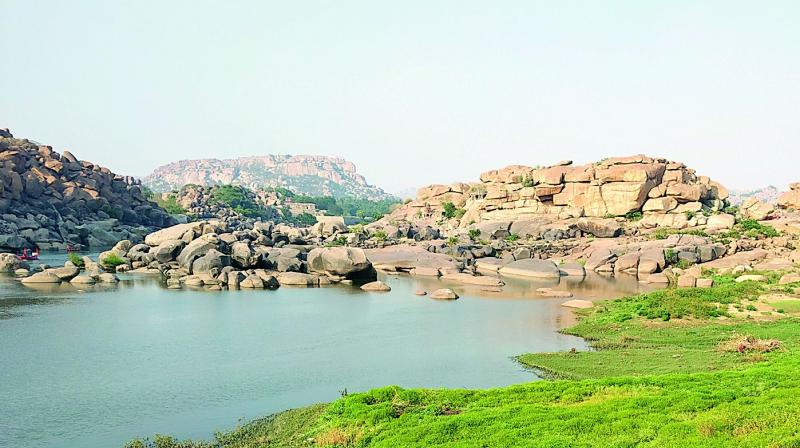Pollution chokes Tungabhadra river
Major polluters are located in the AP border areas.

ANANTAPUR: “Tunga pana, Ganga snana” (drinking water of the Tunga and the same as bathing in the Ganga) is a traditional saying here, but pollution in the Tungabhadra is becoming a cause for concern.
The river is the major source of drinking water for people of Rayala-seema, parts of Telang-ana state and Karnataka. While the Union government is attempting to reduce pollution in the Ganga, no such effort has been made in the Tungabhadra.
The Tungabhadra is formed by the confluence of the 147-km Tunga and 178-km Bhadra, which rise in the Western Ghats, near Shimoga. It runs as the Tungabhadra for 531 km till it joins the river Krishna at Sangam-eshwaram near Kurnool.
The river runs 382 km in Karnataka, forms the boundary between Karn-ataka and AP at the temple town of Mantralayam in Kurnool district. The total catchment area of the river is 69,552 sq km up to its confluence with the Krishna and 28,177 sq km up to Tungabhadra dam.
Industries and mining on its banks in Chikama-galuru, Shimoga, Davan-gere, Haveri, Bellary and Anantapur release effluents into the river. Major polluters are located in Shimoga, Bhadravati and Hospet in Karnataka and in the AP border areas.
There is also a significant presence of pollut-ers in Koppal and Raich-ur districts of Karnataka, Kurnool district of AP and Mahbubnagar district of Telangana.
Experts say that the Tungabhadra is one of the most polluted rivers in the country. Down river from the industries, the water turns dark brown and has a pungent odour, Mr Dhananjay from Kamalapuram in Bellary district said.
A study revealed that pollution in the Tung-abhadra had affected direct or indirectly more than 10 lakh people in the sub-basin as most villages use the river water for drinking, bathing, irrigating crops, fishing and livestock water.
The water for these purposes was previously obtained through an ancient tank system. The livelihood of village fishermen has been harmed by regular fish kills that have exhausted Tungab-hadra's fisheries.
Bellary, Anantapur, Kurnool and Mahbubn-agar districts located in the tailend of the river depend on the Tungab-hadra to meet their drinking water requirements.
The water comes from the high and low level canals, KC Canal along with branch canals which provide drinking water all the way up to Pulivendula in Kadapa district. In Anantapur district, the Penna Ahob-ilam Balancing reserv-oir, Mid-Pennar and Guntakal, Tadipatri and Pulivendula branch canals depend on the Tungabhadra.
A scientist from the rural water supply laboratory said that that they were keen on removing effluents from the summer storage tanks.
“We treat the water to clear chemicals through various processes to serve pure and safe drinking water. We have drained out the cycled water many times due to high rate of particles,” he said. Alum is being added to treat the Tungabhadra water.

